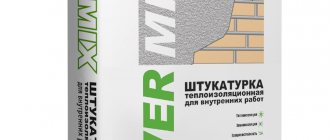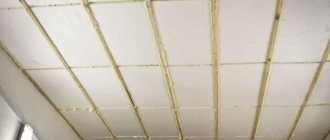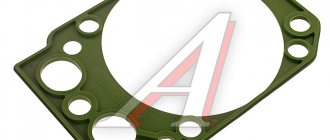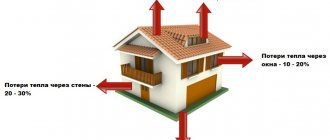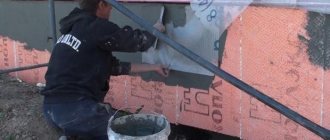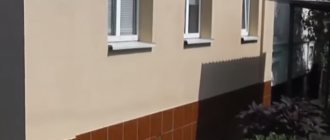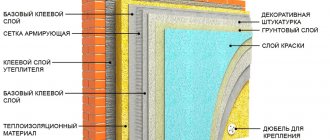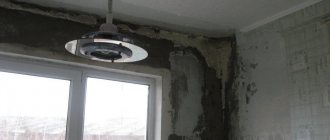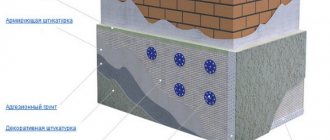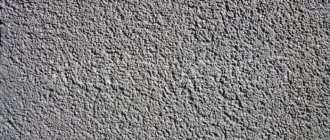No. 1. Composition of warm plaster
Warm plaster was named due to its low thermal conductivity compared to conventional plaster compositions. Similar results were achieved by replacing ordinary sand with special heat-insulating additives.
Warm plaster contains the following components::
- binder , which is the basis of the mixture. This can be cement mortar, gypsum or lime. The material affects the area of application of the plaster: gypsum and lime compositions are suitable only for interior work, and cement ones are universal;
- filler , on which the insulation functions are assigned. Polystyrene, vermiculite, sawdust, perlite sand, foam glass and other additives can be used;
- polymeric water-repellent and air-releasing additives, as well as antiseptics, plasticizers and other substances that improve the quality and performance properties of plaster.
Usually the material is supplied in the form of a dry mixture , and before application it is enough to dilute it with water. Craftsmen prepare warm plaster on their own, but the composition “works” in any case according to one principle: heat-insulating additives, together with air bubbles, create a powerful barrier to the cold. Tests show that a 5 cm layer of warm plaster is equivalent in thermal insulation to a wall of two bricks.
The thermal conductivity coefficient of the material is about 0.063 W/m*0С. This indicator is somewhat worse than that of polystyrene foam, extruded polystyrene foam and even mineral wool, which introduces some peculiarities into its use. In regions with cold winters, warm plaster cannot be used as independent thermal insulation - it is usually applied as an additional layer of insulation and plays a vital role in eliminating the “cold bridges” that arise when installing tile and roll insulation. In areas with mild winters, warm plaster can even be used as the only thermal insulation material, but much depends on the thickness and material of the walls. In the future, we will check all this in calculations.
Types of plaster mixtures for interior work
Plaster mixtures for rough finishing of walls:
Lime plaster mixtures.
Consist of slaked lime, sand and cement. The composition is made in proportions of one to four (1:4). The material is convenient and quick to apply the solution, completely environmentally friendly and fire resistant. However, it is the least durable, unlike other types of mixtures, and is susceptible to moisture. It is used both to create and level the rough surface of the wall, and to create a decorative layer. It interacts and adheres well to cement, gypsum, and clay surfaces. The recommended layer thickness for application is at least 1 cm.
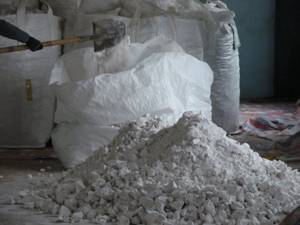
lime
Cement-sand plaster mixtures.
Used for external and internal decoration. It is characterized by greater strength, durability, moisture resistance, frost resistance and higher cost in comparison with gypsum and lime materials. Disadvantages: heavy weight and not suitable for weak and wooden walls. The mixture contains cement. Sand in proportions of one to four (1:4) with the addition of additional plasticizers. They are used primarily for leveling the wall surface for subsequent finishing.
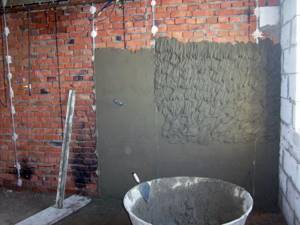
cement-sand plaster on the wall
Gypsum plaster mixtures.
Designed exclusively for interior work, due to its hygroscopicity. They are distinguished by greater plasticity, lightness and therefore are suitable for almost all walls, quickly gain strength, and have a light color. A smoother and softer surface is created with softness, amenable to grinding, unlike previous types. Of the minuses: it has a higher cost, it sets quickly during operation, which can create inconvenience during application. Absorbs moisture well.
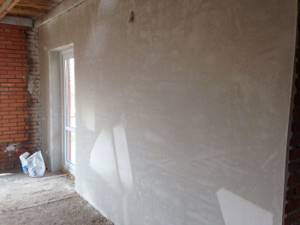
gypsum plaster on the wall
Decorative plaster mixtures
Textured plaster
A type of coarse grain structure. May consist of stone, wood and mineral chips with binders. Characterized by high water resistance. It hides unevenness well and is in contact with any surface; the cost of the material is lower than other types of decorative plasters. Convenient to use. Using textured plaster, durable textured wall surfaces are created. Suitable for both interior decoration and cladding of external wall surfaces.
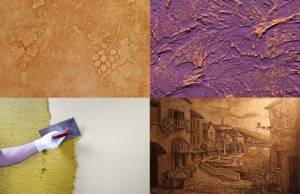
textured plaster
Structural decorative plaster
It is made on a silicate or acrylic base, with the addition of mineral chips, marble and quartz. It can be coarse-grained, medium-grained, or fine-grained. It is characterized by plasticity, pronounced relief, and breathability. Suitable for concrete, gypsum particle board walls. A distinctive feature in working with structural mixtures is the special requirements for preparing the surface of the walls before applying plaster and the special skills of the craftsman. Therefore, the cost of work with structural plaster is also high. The final surface appears textured and unique without repeating the pattern

structural plaster
Venetian plaster
The most expensive type of decorative plaster. The composition of Venetian plaster includes marble and granite chips, malachite, and onyx flour. It is characterized by durability, high strength, water resistance, fire resistance. Realistically imitates natural stone. Good for wet spots in the house. The cost of materials and work is very high, since the composition of the plaster is exclusive and the work must be performed by highly qualified professionals. With the help of Venetian plaster you can create: smooth, embossed and artistic surfaces.

Venetian plaster
Protective (special) plaster mixtures:
X-ray protective plaster mixtures
They have a high density and contain barite concentrate. Used for protection against electromagnetic radiation.
Acid-resistant plaster mixtures
Highly resistant to acidic liquids and other aggressive substances. Used in industries and enterprises with increased harmfulness.
Waterproofing plaster mixtures
Used for finishing rooms with high levels of humidity: bathrooms, kitchens, basements.
Acoustic plaster mixtures
Effectively absorb sounds. Used as additional soundproofing of rooms. They are used for the walls of concert halls, recording studios and similar premises.

dry acoustic plaster
Heat-protective plaster mixtures
They enhance the thermal insulation of the room using special porous additives, in addition to the main function of plaster: tearing out the surface of the walls.
No. 2. Advantages and disadvantages of warm plaster
Warm plaster has become widespread due to its significant advantages :
- multifunctionality. The material can be used as the main thermal insulation, as well as as an additional insulation, which allows you to reduce the main layer or get rid of the notorious “cold bridges”. In addition, there is no need to pre-level the walls;
- high adhesion to most materials, incl. to a tree;
- less weight compared to conventional plaster composition;
- high strength of the applied plaster layer;
- resistance to temperature changes, frost, rodents, mold;
- ease of application. Anyone can cope, because we are actually talking about ordinary plastering work;
- good soundproofing qualities;
- environmental friendliness. The exception is compositions with the addition of polystyrene, which cannot be called completely environmentally friendly;
- fire resistance. Warm plaster, made on the basis of vermiculite, foam glass and perlite, belongs to the class of non-combustible materials (NG). Plaster with the addition of polystyrene belongs to class G1, i.e. at high external temperatures it may begin to burn from the inside.
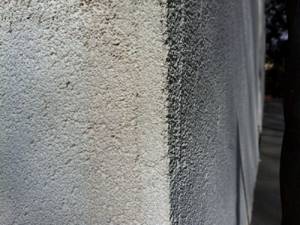
Now about the disadvantages :
- low thermal insulation qualities, therefore it is impossible to perceive warm plaster as a full-fledged insulating material, but this is rather not a minus, but the specifics of the material;
- high weight compared to other insulation materials. If you plan to apply a thick layer of plaster (about 5 cm), care should be taken to strengthen the foundation;
- relatively high water absorption, so additional protection will be needed. However, warm plaster is not a finishing coating anyway and the use of decorative material is required on top of it. You should choose from those that have waterproof properties;
- if the layer of plaster is thick (2.5-3 cm or more), it is better to additionally reinforce it with metal mesh.
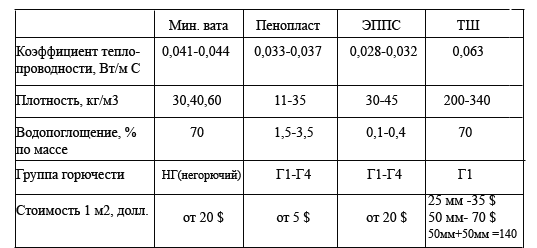
Comparison of the main properties of warm plaster and other insulation materials
Properties and scope
Special additives endowed the heat-insulating mixture of decorative plaster with universal properties. It can be used to decorate walls inside the house, as well as as an external covering.
Warm plaster is well suited for sealing gaps and cracks, joints between walls and building floors. With its help, you can insulate the basement of the house and design window slopes.
But, perhaps, the façade of a building needs insulating finishing most of all, since it is the one that is actively exposed to the external environment (rain, wind, low temperatures).
In addition, the low thermal conductivity of the plaster ensures heat savings inside the building, and the coating itself has the properties of a thermos - in winter it prevents heat from escaping, and in summer it protects the room from the heat.
Since the finished solution has significant weight, the plaster is applied with a thickness of 25 to 100 mm, but for a more effective thermal insulation effect a layer of 100-120 mm is required.
However, such finishing puts a serious load on the wall structure, and applying a thick layer is not an easy task.
No. 3. Types of warm plaster fillers
The properties and scope of use of warm plaster are greatly influenced by the type of filler. The following materials can be used:
- sawdust _ The composition of sawdust warm plaster, in addition to sawdust itself, also includes clay, paper and cement. The use of components that are so “delicate” and sensitive to negative environmental factors does not allow the composition to be used for façade insulation, but such warm plaster is excellent for interior work, especially since it can even be applied to a wooden base. Internal thermal insulation will increase the efficiency of home insulation;
- crushed perlite is obtained from obsidian, which, when treated at high temperatures, swells with the formation of a mass of air bubbles inside, which increases the thermal insulation properties of the material. The only negative is increased hygroscopicity, so this plaster needs reliable waterproofing;
- expanded vermiculite obtained from mica, the material can withstand a wide range of temperatures, has antiseptic properties, is lightweight, absolutely resistant to fire, can be used for exterior and interior decoration, but just like perlite, it is afraid of moisture, and therefore requires enhanced protection;
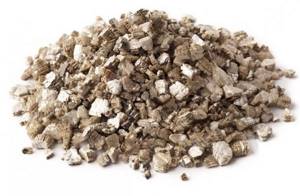
- Foam glass balls are made from foamed quartz sand. This is the most preferred material for filling warm plaster, as it is not afraid of moisture, fire, has good thermal insulation qualities, can be used for facade and interior work, and does not shrink;
- As mineral fillers, in addition to vermiculite, perlite and foam glass, expanded clay chips and pumice powder . These materials cannot boast of high moisture resistance and are inferior to their analogues in many other qualities, therefore they are used infrequently;
- expanded polystyrene used in warm plasters together with cement, lime and some other additives. These are relatively inexpensive compositions for universal use, but due to the flammability of polystyrene foam, they are not used so often. In addition, the surface of the plaster is too soft and therefore requires mandatory finishing.
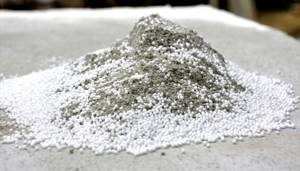
Thin-layer plaster application technology
But here a reasonable question may immediately arise: how immediately? Even without installing beacons? But according to generally accepted plastering technology, it can be applied directly to walls, ceilings and partitions only when their deviation from the correct position in height is no more than 1:100 for the surface inside buildings, and in width and length no more than 1:200 to the side of buildings .
Of course, performing such work requires great precision in brickwork, but it is achievable. At least, not only in the middle of the last century, but also today, there will be masons who are distinguished by the high quality of their work, which subsequently does not require repeated forgery and cover-up.
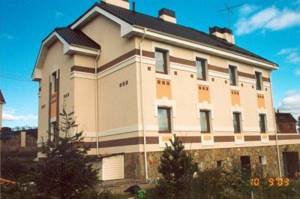
No. 4. Calculation of the thickness of the layer of warm plaster
To determine whether warm plaster can be used as an independent insulation material, you will have to perform a simple calculation, taking into account the region where the house is located, the thickness and material of the walls:
- calculation begins with determining the value normalized heat transfer resistance of the external walls of the house. This is a tabular value, predetermined by regulatory documents (for Russia - SNiP 02/23/2003). For Moscow, according to the table, this value is 3.28 m2*0С/W, for Krasnodar – 2.44 m2*0С/W;
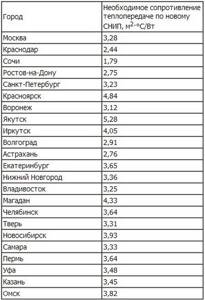
Standardized heat transfer resistance for Russian cities
- define heat transfer resistance of house walls, for which we need to divide the wall thickness by the thermal conductivity coefficient of the material. Let's do the calculation for two houses. One is located in Moscow and is built of ceramic brick, the wall thickness is 0.5 m, the thermal conductivity coefficient from the table is 0.58 W/m0C, so the heat transfer resistance is 0.86 m2*0C/W. The second house is located in Krasnodar and is built from D600 foam block, wall thickness is 0.4 m, thermal conductivity coefficient from the table is 0.22 W/m0C, heat transfer resistance is 1.82 m2*0C/W;

Thermal conductivity coefficients of main wall materials
- calculation of additional insulation . For a house in Moscow this is (3.28-0.86) = 2.42 W/m0C. For a house in Krasnodar (2.44-1.82) = 0.62 W/m0C;
- calculation of a layer of warm plaster , its thermal conductivity coefficient is 0.063 W/m*0C (maybe a little more - depends on the composition and manufacturer). For a house in Moscow 0.063 * 2.42 = 0.15 m, for a house in Krasnodar 0.063 * 0.62 = 0.04 m. Since it is better not to apply warm plaster in a layer thicker than 5 cm, and it has a decent weight, then for a Moscow house it is better to look for another insulation option, and warm plaster can be used in addition. For a house in Krasnodar, warm plaster can be used as an independent insulation material.
A more accurate calculation can be made if we take into account the heat transfer resistance of all finishing wall materials, as well as take into account the number and size of windows and a host of other parameters. It’s easier to do this in special construction calculators, but you can understand whether warm plaster is worth considering as an independent insulation material from the above calculation.
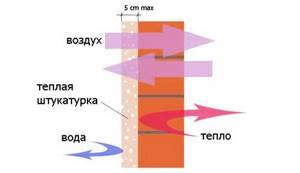
Despite the manufacturer’s assurances and calculations proving the effectiveness of warm plaster, it is not very often used as the main insulation in residential buildings. It is usually used to insulate garages and cottages, and is used to eliminate cold bridges and to treat window and door openings. It is better to use insulation on the outside, but if this is not possible, it can also be applied inside so that it complements the external thermal insulation.
Advice from the experts
Before applying warm plaster, the surfaces must be cleaned, weak layers of the previous finish removed, and a primer must be applied. The mixture is applied to the wetted walls and ceiling so that they do not draw moisture from the solution.
Warm plaster for the facade and interior decoration is applied in a minimum layer of 25-30 mm; a reinforcing frame is required. If a thicker layer is required, then the solution is applied in 2 steps. Complete formation of the layer takes 4 weeks.
Important: It is prohibited to apply a layer of heat-insulating plaster at air temperatures below 5 o C.
If the walls are non-porous, smooth, for example, monolithic concrete or sand-lime brick, reinforcing mesh is required. A layer of up to 30 cm is enough synthetic fabric, more - it is better to use chain-link.

To maintain geometry, work should be carried out along beacons
For porous materials, warm plaster for aerated concrete, brick, foam concrete is applied in 2 stages. The first layer of a more liquid solution is required - spray (1 part cement: 1 part sandstone: plasticizer according to the instructions: water to medium sour cream), this will help improve adhesion.
Insulating plaster for interior work under tiles is prepared in a special way. A polypropylene mesh is mounted on a quick-drying solution (glue), then it is nailed with long dowels to the load-bearing walls through the entire thickness of the leveling layer. And only after the glue has completely dried can tiling be done.
Warm facade plaster is quite easy to sand; you can treat the surface with an abrasive, cover it with primer and paint it with paint for exterior use, silicone or silicate based. Also, with this type of finishing you can use all types of ventilated facade systems. But decorative plaster and tiles for exterior use over warm plaster are not recommended.
No. 5. Manufacturers of warm plaster
There are not so many manufacturers of warm plaster, but among the proven compositions it is worth noting:
is presented in several compositions: UMKA UB-21 is suitable for external and internal work, can be applied to brick, concrete, foam and aerated concrete, shell rock and other materials manually or by machine, has the lowest possible thermal conductivity coefficient - 0.063 W/m*0C. The composition can be installed without a mesh thanks to the basalt fibers in the composition. The manufacturer says it is possible to make a layer of 10 cm, but it is better not to experiment with such a thickness. UMKA UB-212 has slightly lower thermal insulation qualities and is suitable for beaconless thin-layer application. UMKA UF-2 is a finishing decorative plaster that has a pleasant “side” effect – heat retention, although the thermal conductivity coefficient here is 0.13 W/m*0C;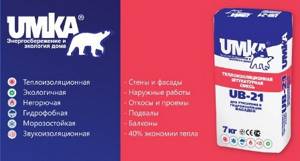
warm plaster "Umka"- Knauf warm plaster is made with the addition of expanded polystyrene and hydrophobic substances and can be applied in a layer of up to 3 cm;
- Warm plaster “Mishka” is produced with a foam glass filler, which ensures vapor permeability and fire resistance of the composition. Thermal conductivity coefficient 0.065 W/m*0С;
- Warm plaster "Houncliffe" is positioned by the manufacturer as an assistant in insulation, allowing to reduce the thickness of the walls and the main insulation. The thermal conductivity coefficient is 0.09 W/m*0С, and the composition includes a filler of its own production, which, according to the company, does not burn, has minimal water absorption, does not require a protective layer, has increased noise insulation and is completely environmentally friendly;
- warm plaster "Varmmix" is made on the basis of cement and foam glass, has proven itself well, the thermal conductivity coefficient is no more than 0.065 W/m*0C.
Types of heat-insulating mixtures for plastering
Thermal insulation compositions are classified by the type of binder: gypsum, cement, etc., as well as by the type of insulating filler.
Straw based
The material used for a long time is insulating plaster made of clay with straw grain. Straw in clay coating acts as reinforcement and creates voids.

As a result, the plaster coating can be thicker without delamination or cracking. It is applied as a rough layer on the wall over shingles by hand. The coating is breathable, absorbing excess moisture from the air and returning it when the room is dry. Before application, the walls are moistened or sprayed with clay mash. The main disadvantage is the long drying time. The main advantage is a favorable microclimate and low cost.
Sawdust based plaster
Sawdust has long been used for home insulation. They covered the rubble and ceilings. They were added to clay and lime mixtures for coating walls. Sawdust retains heat better than wooden beams, since the thermal conductivity coefficient of sawdust is 0.06 - 0.07 W/(m2•°C), and that of wood is 0.18. In terms of heat retention, sawdust is much closer to polystyrene foam.
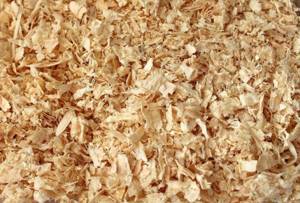
Compositions with sawdust can have a different mineral base - clay, gypsum (Armenian plaster: 3 parts of gypsum, 1 part of sawdust), cement and lime. The main application is indoors. Before mixing the composition, sawdust is sifted through a sieve with a cell diameter of 5 mm.
Polystyrene as filler
A type of polystyrene foam - expanded polystyrene - is used for various purposes, for example, as a filler for anti-stress toys, upholstered furniture, and sleeping pillows. The material is ultra-light (up to 98% air), does not absorb water, and is not food for microorganisms. It is used in cement screeds for floor insulation (1:4:4 - cement/polystyrene granules/sand), and also as a heat-insulating leveling layer (1:3) laid under the screed.
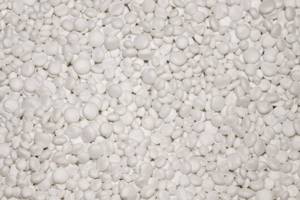
Plaster mixtures with polystyrene are used for work on facades and indoors. They are produced on the basis of cement or cement with lime. Although they do not burn, they can release toxic substances when ignited.
Plaster mixture with the addition of foam glass
Small glass balls (up to 2 mm), which contain air bubbles that are not afraid of water, are perfect for use as a filler for warm plasters for facades. Such compositions are easy to install, retain heat well, and do not get wet.
Mixtures based on perlite, vermiculite and expanded clay
When volcanic lava frozen on the ground comes into contact with water, obsidian hydroxide is formed - porous round granules similar to pearls. Due to this, the hydroxide received the name pearlite. The granules have high porosity, which reaches 40%, and are capable of absorbing water 4 times more than their own weight (hygroscopicity is a disadvantage of such mixtures). For plaster composition (external and internal use), expanded perlite is more often used.
Currently reading: How to choose a bed for the bedroom - tips for choosing a bed for the bedroom
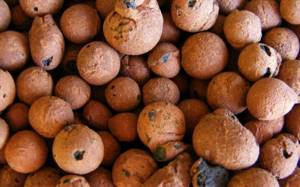
The mineral group of hydromicas contains vermiculite, consisting of small exfoliated scales of brown-golden color. When heated, vermiculite swells and fills with air. Used in lightweight concrete compositions and warm plaster mixtures. Has antiseptic properties. Perlite and vermiculite absorb odors and water well, so they need finishing plastering.
Expanded clay granules (crumbs) are produced by firing some low-melting types of clay. During firing, light, low heat-conducting granules of different sizes are formed. For warm facade plaster, granules up to 5 mm in diameter are used.
No. 6. Making warm plaster with your own hands
Ready-made plaster is sold in powder form, which must be diluted with water. The proportions are indicated on the packaging. The main thing is to prepare the solution at once from all the powder in the package - it is not advisable to divide the mixture, since then it will be much more difficult to achieve the required consistency and, therefore, performance qualities. After thorough stirring, the mass is left to mature for 5 minutes, after which you can begin application.
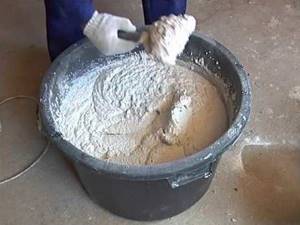
You can save money and make warm plaster yourself . The most versatile and inexpensive solution is obtained using perlite or vermiculite. It is necessary to mix 4 parts of vermiculite or perlite and 1 part of dry cement. The thoroughly mixed mixture is diluted with a solution of water and a plasticizer. The latter can be purchased at the store, or can be replaced with PVA glue at the rate of 50-60 g of glue per 10 liters of plaster. The mixture is diluted with a water-adhesive composition and constantly stirred for homogeneity. The solution should have a thick consistency. After preparation, it is allowed to sit for 15-20 minutes, and you can begin applying the plaster.
Price
Today you can find thermal insulation mixtures on sale, the price of which depends on the manufacturer. Here are some samples:
- warm plaster IVSIL (12 kg). A mixture based on cement with the addition of foam glass as a filler - 790 rubles;
- thermal insulation mixture KNAUF (25 kg). Cement-based composition with polystyrene foam filler – 347 rubles;
- WARMMIX plaster (14 KG). The mixture consists of cement, foam glass and polymer additives - 1950 rubles;
- KEM plaster (35 kg). Filler – perlite. Price – 295 rubles.
Self-cooking
If you want to save on purchasing ready-made compounds, you can make warm plaster yourself.
A self-prepared mixture is somewhat colder than the branded one, but it will cost several times less.
Below we will consider the option of preparing a composition with polystyrene foam filler.
Screeding is performed in various types of rooms to level the surface and form the base of the floor. By clicking on the link you will find out the proportions of the floor screed solution.
A screed is an essential component of the structure of any floor, which is located under the floor covering and ensures the durability and durability of the final finish. Here's everything about how to make a floor screed.
Wall decoration is an important component of a truly beautiful and cozy interior. Here is complete information about stone-look wall panels.
To obtain the optimal density of the plaster (450-500 kg/m3), the following proportions are used:
- 30 liters of foam chips (no larger than 3 mm in diameter);
- 9 liters of fast-hardening cement (it is better if it is white cement M600);
- It is advisable to add a little detergent to the water that will be used to dilute the mixture (25 ml per 10 liters of water).
- To increase the plasticity and adhesive properties of the solution, you can add 1 kg of slaked lime to the composition.
Useful tips and tricks
Working with warm plasters is relatively simple.
To get a durable and even coating, you should follow several rules:
- To install the beacons, you should use the same mixture that will be used for plastering. If other products are used, they may lead to the formation of cold bridges.
- The final leveling and removal of the beacons should be carried out within 2 hours after plastering. If this is not done, the solution will harden and lose its plasticity.
- The mixture should be applied in layers, the thickness of which does not exceed 2 mm. This approach will allow you to level the surface more flexibly.
- Be sure to follow the manufacturer's recommendations when mixing components. Do not leave the prepared solution for future use, as it will lose its original properties.
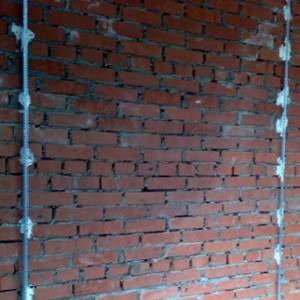
Warm plasters are another opportunity to turn a building into a warm and pleasant home. Choosing the right product will allow you to get a reliable surface that will last for a long time.
See all about ThermoVer warm plaster in the video below.
Relationship between characteristics and components
As mentioned above, depending on the properties of the components, the possibilities of using plaster in rooms and on facades are determined; in the latter case, the indicators of resistance to water and temperature changes are important. We must not forget that the composition is dominated by lime, cement, plasticizers, and various functional additives. If we take the properties of polystyrene foam filler as a basis, we can give the average characteristics of coatings called warm:
- specific gravity per cubic meter varies between 200-300 kg;
- water absorption in relation to mass remains at the level of 70%;
- flammability index G1;
- thermal conductivity indicators are within 0.07 W/m degrees.
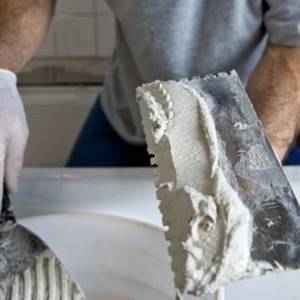
Description
The excellent thermal insulation properties of warm plaster are associated with its composition. Manufacturers do not use sand as a filler, but components that have low heat conductivity. It will also be interesting to learn more about how the façade is finished with foam plastic and plaster.
The filler can be:
- Styrofoam;
- wood waste;
- expanded vermiculite;
- perlite sand;
- expanded clay crumbs;
- pumice chips.
If you want to learn more about how warm plaster is used for exterior work, you should follow the link.
In a hardware store you can often see warm plaster for external work, which contains polystyrene foam granules. Due to the universal filler, the facade insulation mixture has unique properties. Thanks to foamed foam, it is possible to increase the thermal insulation qualities of plaster and significantly reduce its price.
On video - warm plaster for exterior use:
Varieties by composition
There are 2 types of heat-insulating plaster mixtures:
- Warm cement plaster. This includes all of the above cement-containing mixtures with the specified additives.
- Foamed plaster. A component is added to the cement-containing mixture that causes the formation of foam when interacting with water. The structure of the solution in this case will be similar to foam concrete in both its raw and hardened form. This type of plaster has significantly higher thermal insulation properties, but it requires mandatory subsequent processing - painting, since the porous structure, like a sponge, can effectively absorb moisture.

What is thermal insulation plaster?
Thermal insulating plaster has a second name - warm. It is a specially developed material that is used in construction. Plaster of this type has minimal thermal conductivity due to the fact that a specific filler is added to the mixture.
As a rule, polystyrene and perlite are added to the composition, which have the properties and characteristics of the thermal insulation nature of the finished mixture. Thanks to the use of warm plaster, it provides an opportunity to reduce cash costs during the cold season.
Where is plaster used for wall insulation?
Thermal insulating plaster can be used for finishing capital structures both indoors and outdoors. Let's consider some features of both formats of its use.
Interior work
To finish the interior surfaces of a building, as a rule, a not too thick layer of plaster is applied. And it’s not at all a matter of the desire to save the useful volume of the premises; it’s just that plaster to insulate the walls from the inside will prevent the internal heat of the house from penetrating into the walls themselves.
What matters here is the so-called dew point, namely its exact location. At what point on the wall of a building does the temperature drop so much that the moisture in the air condenses? Obviously, if this point (or rather, an entire plane) is located inside the solid wall, then this will lead to its erosion - water is extremely dispersed, and its vapors are able to penetrate into all the pores and microcracks of concrete and cement masses. These vapors should not be allowed to turn into liquid (and then possibly freeze) directly inside the wall.
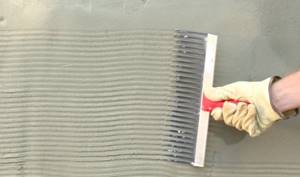
Previously, this was achieved through excessive heating of houses, associated with large energy losses (houses, like giant air heaters, heated the street). Now, heat consumption has been significantly reduced, and plaster on the insulation of internal walls can leave the outer layers of concrete masses “unarmed” from exposure to cold and moisture. Warm plaster is used to insulate walls from the inside, but mainly for the purpose of creating soundproofing of rooms. In this case, its layer should not exceed 30-35 mm.
For example, in Sweden, at the legislative level, there is a ban on insulating residential buildings from the inside (on the scale of private apartments).
External
But for finishing facades, heat-insulating plaster is used very widely. Here its layer, as a rule, is never less than 50 mm, and often reaches 100 mm.
In this regard, there are 2 main nuances:
- Such a mass of plaster must be laid on a reinforcing mesh.
- Dried plaster on top must be painted to prevent the absorption of atmospheric moisture by heat-insulating, but at the same time dispersed granules and materials.
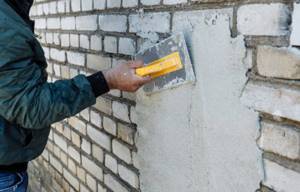
Reinforcing layer
After preparation, you can proceed to plastering the reinforcing layer. Often, plaster alone is not enough to level out detected differences; then a reinforcing mesh is required. It strengthens and fastens the plastered surface, significantly increasing the permissible dimensions of the layer thickness. Although manufacturers claim that plaster does not need to be reinforced with reinforcing mesh, it is better to consult with knowledgeable people before making a final decision.
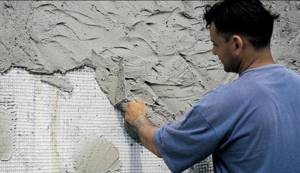
With reinforcement
What's next?

Warm plaster is not an ideal material for insulation without a single drawback.
However, it has a lot of advantages , which makes it attractive for both private and public construction.
The highest quality are the new types, such as “Mishka”, ThermoUm, which allow finishing of facades. They are waterproof, have an attractive white color and an interesting surface texture; if desired, they can be painted. And because of their good plasticity, decorative elements, for example, stucco, can be made directly from them.
If, as domestic production expands, prices for warm plaster decrease, then this type of insulation may become a leader in use, especially in the private sector.
ThermoVer warm plaster: characteristics, properties and methods of application - watch the video about all this:
Preparatory work
Before applying warm plaster to the walls, they should be prepared for work.
To do this you need:
- remove protruding elements in the wall: pieces of reinforcement, brick or concrete protrusions;
- if there was an old coating on the wall (paint, putty), it should be removed;
- if there is insulating material or sand in the panel joints, everything must be cleaned;
- if there are cracks in the wall, they need to be sealed with sealant;
- degrease and clean the wall surface from dust;
- treat the wall with a primer liquid.
NOTE!
In order to ensure high adhesion of the solution to the base, it is recommended to apply a thin layer (from 3 to 5 mm) of the mixture after the primer has dried.
Complete drying is achieved after 24 hours in dry weather, then you can begin applying the main layers of putty mixture.
Reviews
- Marina, 32 years old: “Last year my husband and I decided to try the thermal insulation qualities of warm plaster. We used it to insulate the summer kitchen. I would like to note that I didn’t really believe right away that it would be able to perform all of its functions that the manufacturer indicated. But I was wrong. The room really became very warm and comfortable. In addition, such insulation had a positive effect on heating bills. We are very pleased, so now we’ll get to work on insulating the house.”
- Andrey, 47 years old: “My friend has long experienced the quality of warm plaster. Well, 2 years ago I decided to cover the façade with this composition. It is a pleasure to work with the material. Very fast and easy. The plaster also does not take long to dry. In winter the house is warm and cozy, and in autumn and spring I can turn off the heating even for a day and the warmth will not go away.”
- Sergey, 38 years old: “I work in the construction industry and have come across such a material as warm plaster more than once. This is truly a unique composition. It can be used on any surface, has excellent thermal insulation properties, and due to special additives it can be used as a topcoat. Using this finishing option, you don’t have to worry that over time cracks will appear on the surface or the color will fade. Warm plaster is not affected by negative weather factors and sunlight.”
Maybe
Preparing the mixture and base
You can prepare the mixture for the thermal insulation method of applying plaster yourself and without problems.
The procedure for preparing the plaster solution:
- Pour plaster powder into a large container.
- After this, add water. The quantity directly depends on the requirements in the instructions.
- The resulting mixture must be mixed using a construction-type mixer. You can stop mixing when a mixture of homogeneous consistency is formed.
- Then the solution should sit for at least five minutes.
